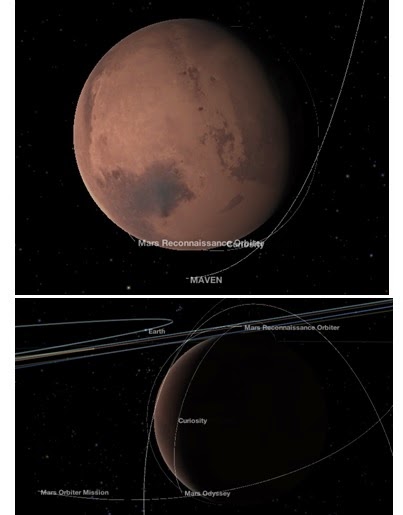dinesha wrote:How challenging would it have been for the MOM team to target the Orbit similar to that of Maven's 150Km-6500KM. Was this limited by the extra fuel requirement, volume of the tanks and the payload fairing weight of the PSLV? Did the fuel consumed during the Orbit raising maneuver around the earth made the difference for the final achievable orbit around Mars?
Here is my perspective.
First the MOM's selected orbit is not necessary because we can
not do 150Km-6500Km orbit, but what we wanted to do.. with the resources we have (and keep some of it in reserve etc), and what our mission objectives are, a more elliptical orbit was decided...The orbit was NOT decided
merely because it is the best one can achieve.
For a purely a technical exercise, the MOM's rockets, (and remaining fuel) can produce a more closer (as close as MAVEN or even closer) and more circular orbit - that is if my calculations are not grossly inaccurate . Having said that, I would rather be safe and conservative (very conservative) than fool-hardy just to achieve closer orbit. .. May be my CH4 detecting equipment works well at 1000 Km (and does not need to go at 200 Km)...And I will conserve/save fuel for orienting those high-gain antenas or other stuffs. May be I don't want to take a chance, and push my navigational and control system to their limits... What MOM wants to do (as CLEARY stated in its mission statement) is to validate (and learn) all the existing systems for future space flights. ... One certainly does not want to take any unnecessary chance.
But who knows --- may be in a few months from now, if the side thrusters still have fuel, and MOM has achieved all its objectives.. and still can have some fuel in reserve to adjust antenas etc...and powers to be tell the engineers it is ok.. at some point (at perigee) one may decide to fire rockets -- (after all one would need only a few Km/sec delta-V) and go closer to the surface..

( Such things have happened in past in a few other missions)... After all, if we are going to be in the vicinity for a long time, we will have more time to think about such things.
For perspective, if the main rockets fail, the side thrusters are good enough to produce a delta-V to put MOM in mars's orbit, and as current plan, they will be used in this scenario...So if all those nimbu-mirchee work, may be the the main rocket fail

and achieves the required delta-V and those small rockets could be used later, to make MOM fail even more..

(remember, for rough calculation the escape velocity on Mars surface is about 5Km/sec - so you need a small delta-v for orbit maneuvers)


